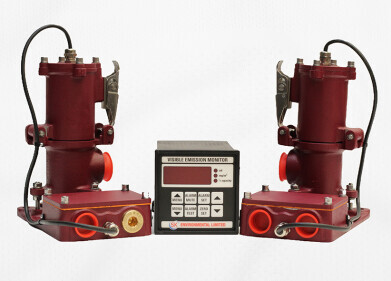Air Monitoring
Could AI help unblock the logjam in planning applications?
Mar 13 2024
The specialist air quality company Airly has announced the launch of a new AI tool that has been developed to revolutionise the work of air quality consultants and dramatically accelerate the production of air quality assessments in planning applications.
“Working closely with air quality consultants, we have utilised the power of AI to dispense with the requirement to manually search for local geographic, environmental and transport data and to then generate reports,” explains Airly Product Lead Marta Steiner. “These are time-consuming, repetitive, and frankly boring tasks, so it makes a lot of sense to automate them and free up consultants for work that actually needs their expertise.
“Our trials have shown that Airly AI will reduce the time needed to draft air quality assessments by 70%,” she adds. “This will be a tremendous benefit for air quality consultancies, but perhaps more importantly, it will also mean that the planning applications can progress more quickly – especially when an air quality assessment is requested late in the process, in reserved matters and as part of a detailed planning proposal.”
An Airly AI user starts the process by entering a few basic details about a scheme into the Airly platform, which then utilises the power of AI to rapidly gather relevant data from both public and private sector online resources. Typical data sources include local authorities, Defra, the Department of Transport, the Environment Agency, Google Earth and Ordnance Survey. In addition to mapping data and local policy for planning and transport, Airly AI also includes monitoring data from local authorities’ Annual Status Reports, as well as background concentrations, human receptors and ecological receptors. The software also automatically provides links to the data sources. “Traceability is extremely important,” explains Jethro Redmore, founder of Redmore Environmental. “We have evaluated the new Airly AI tool, and were pleased to note that the data sources are exactly the same as those that we use when we go through the process manually, so there is no change in the levels of confidence that we have in delivering accurate, reliable, defensible air quality assessments.”
Typically, the AI tool is able to generate materials in just a couple of minutes that would previously have taken days to compile. The air quality consultant is then able to rapidly define the model and generate ADMS input files. Using generative AI, the tool creates draft text for inclusion in reports, as well as tables, figures, and images, and an MS Word plug-in is available to enhance the drafting of reports.
In the past, an individual will have had to visit each online data resource, search for the relevant part, and then often copy and paste the data from one format into another. This long-winded approach is no longer necessary, which means that consultants will have more time to interpret the data and offer expert insights and advice.
Explaining the importance of the Airly AI tool, Jethro Redmore says: “The consultancy landscape will change, and early adopters will benefit from improved efficiencies that will allow their consultants to focus on the aspects of their work that add real value for clients. I believe that this will be quickly adopted across our industry because it will become more difficult for others to compete without it.”
Freya Hoyle, Associate Director at Rappor agrees. She says: “A lot of people may be initially wary of AI - but none of us went to university to learn how to copy and paste! So, by eliminating the time taken to perform these mundane tasks, we will free our experts for more interesting and challenging work.” Freya also believes that the Airly AI tool will also deliver a potentially unintended benefit in staff recruitment and retention. “Inevitably, data gathering is usually undertaken by the most recent, younger consultants, which is the worst possible way to introduce them to the air quality sector,” she explains. “Recruitment is a constant challenge, so anything that helps to make the job more interesting and enjoyable has to be welcomed with open arms.”
The tool has been developed in strict accordance with the guidance provided by Environmental Protection UK and the Institute of Air Quality Management (IAQM) in their pivotal document, "Land-Use Planning & Development Control: Planning for Air Quality". IAQM is the leading body for air quality professionals in the UK, and this publication has been instrumental in ensuring that Airly AI follows all of the relevant standards.
As a member of the IAQM, and with previous roles leading air quality policy in London, Lucy Parkin also welcomes the development of AI in air quality. “Anything that helps deliver evidence more effectively will help inform policy development,” she says. “For example, it will help policy makers and town planners to figure out why a pollution hot-spot is a hot-spot, so that they will be in a better position to design mitigation measures.”
As part of the initial evaluation stage, over twenty-five air quality consultancies signed up to critique the new tool. Each of these companies has already been provided with a demonstration of the system, and Marta Steiner says: “The response has been unanimously positive – everyone was delighted to see the dramatic increase in speed with which we were able to gather all of the key data, and they all commented that this will free their staff to spend more time on value-added activities. Many also said that the automation of the more mundane elements of this work will also help to eliminate the potential for human error.”
During March 2024, each of the participating consultancies will be provided with a user account so that they can test the tool ‘in anger’. Marta says: “Most of the users will initially apply the tool to projects that they have already completed. As a result, they will immediately be in a position to evaluate the quality of the delivered material and to compare it with that which was created manually.”
The company Airly has already pioneered the development of small, MCERTS-certified air quality sensors that can be deployed quickly and easily almost anywhere, delivering continuous real-time data to dramatically improve our understanding of the factors affecting air quality. Airly sensors are already used by hundreds of local councils across the world and leading consultancies including Ricardo, WSP and Cundall.
Drawing parallels with developments in other software-based technologies, Airly CEO Wiktor Warchalowski says: “We believe that the impact of this new AI tool in the air quality sector will be similar to that of CAD software in the engineering sector. Today, almost every new product in the world is being designed with CAD software, and we believe the day will soon come when every air quality assessment is delivered efficiently with the help of AI.”
Looking forward, Wiktor adds: “With the benefit of Airly AI, air quality consultants will lower costs and save time. At the same time, their work will become more interesting and enjoyable, allowing them to optimise the use of their skills and experience, but from the public’s perspective, perhaps the most visible effect will be faster outcomes from planning applications.”
Digital Edition
IET 34.2 March 2024
April 2024
Gas Detection - Biogas batch fermentation system for laboratory use with automatic gas analysis in real time Water/Wastewater - Upcycling sensors for sustainable nature management - Prist...
View all digital editions
Events
May 03 2024 Seoul, South Korea
May 05 2024 Seville, Spain
May 06 2024 Minneapolis, MN, USA
May 13 2024 Munich, Germany
May 15 2024 Lund, Sweden


















